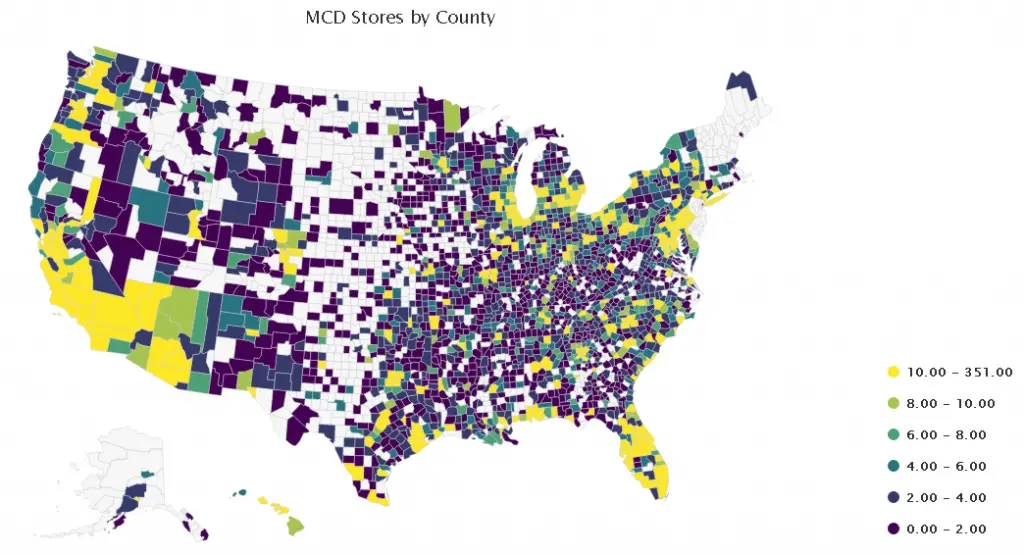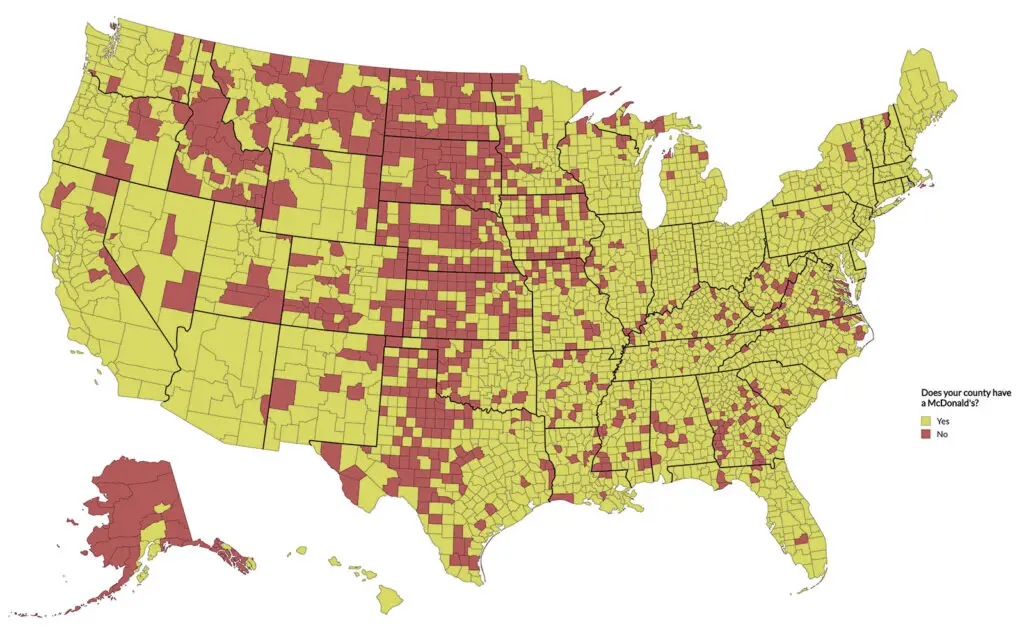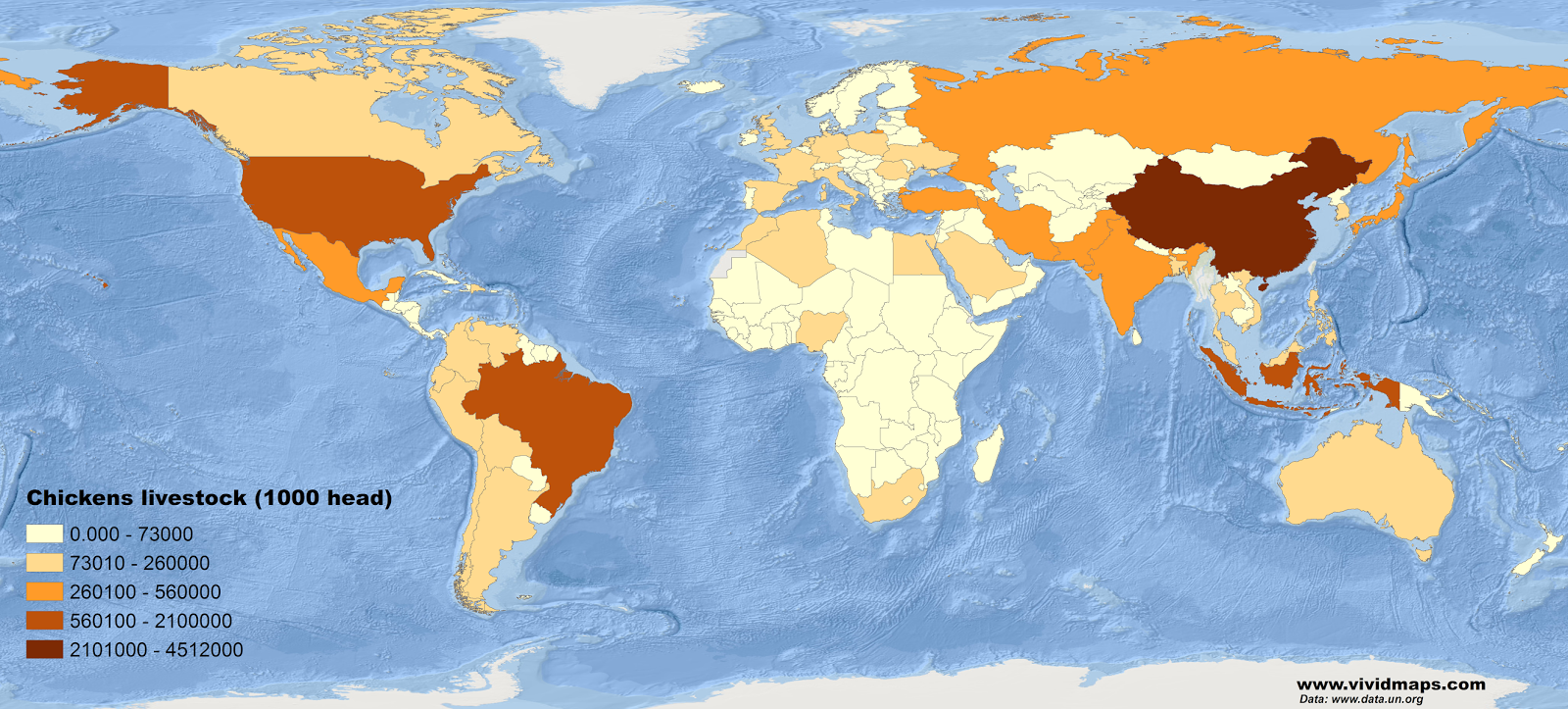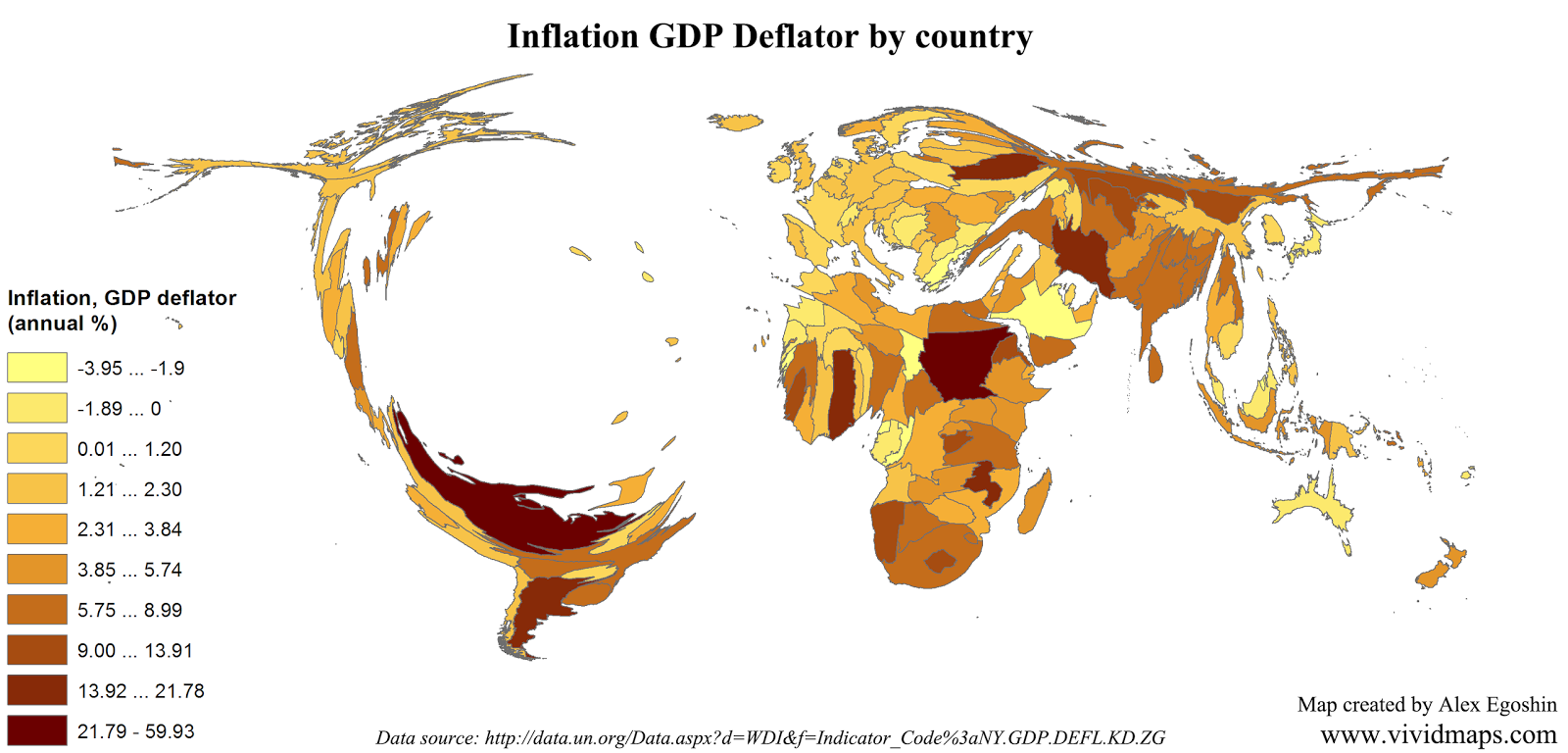McDonald’s Stores Across the United States
When you think about American fast food, McDonald’s is likely the first name that comes to mind. However, the distribution of these restaurants across the United States tells an interesting story about population patterns, economic development and even local food preferences.

Looking at this map of the United States, the bright clusters of McDonald’s locations mirror population density patterns. California’s coastal regions shine brightly with a dense concentration of restaurants, particularly in the Los Angeles and San Francisco Bay areas. The East Coast shows another impressive cluster, with an almost continuous line of restaurants from Boston to Washington, D.C. These patterns highlight how McDonald’s follows population centers and major transportation corridors.
But perhaps even more interesting is where McDonald’s isn’t present.

Surprisingly, 793 counties across the United States don’t have a single McDonald’s restaurant. This absence creates what some researchers call “McDonald’s deserts.” These areas typically fall into two categories:
- Sparsely populated regions, particularly in the Great Plains and Mountain states
- Counties with unique local food cultures that favor regional chains
For example, in central South Dakota, you might drive for hours without seeing the familiar golden arches. According to QSR Magazine’s analysis, this isn’t just about population density – it’s also about local eating habits and economic factors.
Some fascinating facts about McDonald’s distribution:
- Manhattan has the highest concentration of McDonald’s per square mile in the country
- Los Angeles County has the most McDonald’s locations of any county (over 350)
- Four states account for nearly 25% of all U.S. McDonald’s: California, Texas, Florida, and New York
What’s particularly notable is how McDonald’s distribution reflects broader demographic and economic patterns. Areas with McDonald’s typically have:
- Higher population density
- Greater highway access
- More diverse economic activity
- Higher median household income
For those interested in exploring more about U.S. geography and mapping, here are some map posters and atlases:








